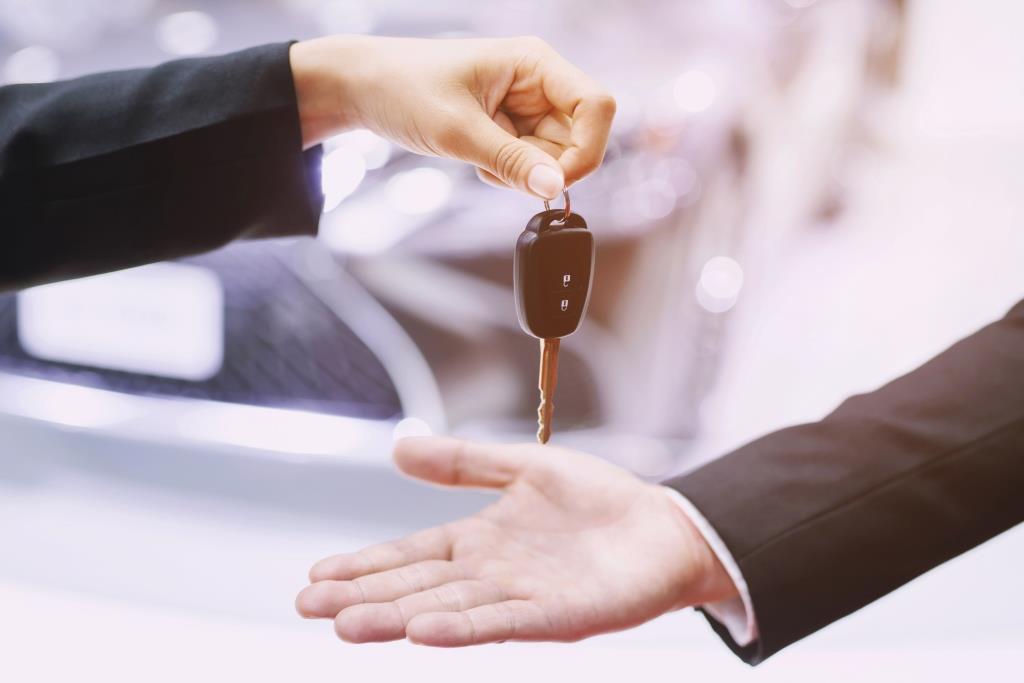The Ultimate Guide To Selling Your Aged Inventory Using VIN-Specific Advertising

Table of Contents
Table of Contents
The Ultimate Guide To Selling Your Aged Inventory Using VIN Specific Advertising
Selling Aged Vehicle Inventory
Aged inventory is one of the biggest pain points for dealers: the flooring costs, the lot rot, frozen capital… You know the deal. It goes a little bit like this: You went to a car auction and thought you got a great deal for a car that you hoped to sell in no time. But it’s been almost two months of the car sitting on your lot, collecting dust and accumulating all sorts of costs, not to mention depreciating in value. You just cannot seem to find a willing buyer. So what should you do now? Put it up for auction and cut your losses?
We say: no way.
8 Tips for selling old vehicle inventory faster with VIN specific advertising
1. Value-based pricing
There are three main types of pricing strategies: cost-based pricing, competition-based pricing, and value-based pricing. Cost-based pricing is the practice of setting prices based on the cost of the goods or services being sold. A fixed profit or percentage is added to the cost of the item which results in the price at which it will be sold. Competition-based pricing is the practice of using competitors’ prices for the same or similar products as the basis in setting a price. Value-based pricing is the practice of setting a price based on the product’s perceived value to the consumer.
When thinking about dealership pricing strategy, cost-based pricing should be the last resort. Of course, no dealer should buy a car if that won’t be profitable., However, if that transaction happens, the cost of the car is a sunk cost— it’s money that has been spent already and cannot be recovered, and therefore should be irrelevant in informing the future price and value of the car. The prospective buyer does not care how much the car cost and how long it’s been sitting on your lot.
Competition-based pricing should be used as a reference but should not drive your pricing strategy. Especially with aged inventory, where there are so many variables in determining the price of the vehicle, it’s almost impossible to truly compare t cars, even same-model inventory. Having said that, dealers should keep an eye on market prices to gauge market pricing.
Value-based pricing is what should be driving your pricing strategy. At the end of the day, car buyers will buy your car if they believe the price reflects the value they will receive from the car.
Apple is the king of value-based pricing, making massive profits on all of its products. It costs between $200-$300 to manufacture an iPhone, yet Apple retails at ~$1,000 or more. Apple interprets what the perceived value of their products are to consumers and prices accordingly. As one of the most valuable companies in the world, it’s critical for dealerships to consider the impact of Apple’s pricing strategy on their businesses.
2. Incentivize salespeople to sell aged inventory
Implementing the right incentive structure for your salespeople is critical. Selling aged inventory is difficult and often harder to sell than the most popular makes and models on your lot. It’s therefore important to provide salespeople with extra bonuses for selling aged inventory.
To put it simply, you need to make it worthwhile for your salespeople to sell your ‘difficult’ vehicles with tempting incentives. It’s a tried and true method that works.
3. Implement an inventory turn policy
Inventory Turn is a popular inventory management concept that is used to determine the overall efficiency of an entire supply chain. By implementing an inventory turn policy, your dealership has a clear aim to turn your inventory as many times as possible to maximize profits. The gold standard in the automotive industry is to turn your inventory 12 times a year, or approximately every 30 days. While there are many factors involved in determining the right inventory turn at your dealership, make sure that your turn policy aligns with reality. For example, during a snowy winter, you cannot expect that your inventory turn will be as fast as during summer with no weather hazards.
4. Position aged inventory strategically
Positioning is often overlooked but it is critical to having an effective strategy. When you go shopping at Walmart, Costco, or any other store, we may not realize it, but they have deliberately positioned their inventory in such a way to maximize profits. Why do you think the milk and eggs are always at the back of the store? Because they are essentials that you need and they hope you’ll buy a few extra things you pass (that you don’t need) on the way. Why is the confectionary placed at the exit counter right within a child’s reach? Because they know kids will nag for chocolate they’ve been staring at while we load our groceries onto the counter. So when strategizing your floor planning, place your aged inventory in the most attractive position in your dealership to increase reach by showing every potential customer the inventory.
5. Use a calculation tool to measure your holding costs
Holding costs are a major headache and eat away at your margins; they can vary between $40-$85 a day. It, therefore, goes without saying that it is really important to track and measure your holding costs so that you can preempt and plan for how you will move more problematic inventory. Knowing exactly what your holding costs are will provide you greater clarity as to which inventory is eating away at the margins and accurately estimate what future profit you can expect to make from your inventory.
There is a multitude of easy-to-use online calculation tools that you can use to measure your holding costs on a VIN-specific level.
6. Be data-driven
The world is increasingly becoming more and more data-driven and that includes the automotive industry. Gone are the days when you can price a used Chevy using your gut instinct. Now, in order to gauge the value of your inventory, you must do market research that is backed up by data. Consumers have done their research online before visiting a dealership and they are well informed as to what the price of your vehicle should be. Dealers need to be meticulous in collecting data on every aspect of the dealership. From what sales techniques work best (check out Gong), to what color car sells the most (check out this New York Times article), the more data you can collect and turn into actionable insights, the better your salespeople will perform, the faster you’ll turn your inventory, and the fewer aged cars you’ll have on your lot at the end of the month.
7. Set aside a special purpose marketing budget that is VIN Specific for your aged inventory
Ordinarily, your marketing and advertising strategy is ROI driven and attempts to drive as much quality traffic and as many quality leads as possible to your dealership that will ultimately lead to car sales. However, selling your aged inventory requires a different approach. It’s what I like to call a Residual Value Protection approach. And for this, you need a focused and designated budget that is VIN specific rather than lead opportunity-driven. Essentially, you need to be willing to take more risks to drive a quality lead. It goes without saying that it’s going to cost you more to drive a lead for your aged inventory than it is for your brand name. But that’s not how you should think about it. Instead, you should compare the cost of bringing in a quality lead to the costs of that car sitting on your lot for days on end in addition to the loss you will make on that car being shipped off to auction. When you look at it from that perspective, it’s a no-brainer that you should invest heavily in marketing and selling your aged inventory. By even conservative estimates, the average used vehicle that is shipped off to auction will lose you between $2,600 and $5,700 (see table below).
That’s not to mention the daily costs of the car sitting on your lot. It’s an absolute no-brainer then that car dealers should have a special purpose budget that is VIN specific for their aged inventory.
8. Automated optimization for moving aged inventory
Now that we’ve established how important it is to set aside a separate budget specifically for your aged inventory, it is critical that you optimize your aged inventory budget. You need to implement a simply-priced VIN-specific advertising platform that retails near-wholesale inventory efficiently and intelligently, leveraging AI and machine learning technology that has the ability to find that buyer looking for your snow plow at 3 AM that has been sitting in the back of your lot for months. But be careful with what’s being marketed out there. Lots of these purported VIN-level solutions are quite expensive and actually based on simplistic technology and unreliable website traffic, which are slow to adapt to opportunities in the marketplace. Make sure you’re finding the right technologies that leverage smart, data-driven marketing to move more cars off your lot.
Conclusion – Recapping VIN-Specific Advertising
Aged inventory is one of the biggest challenges dealerships face. However, implementing the best practices can help your dealership find the right buyer for every piece of inventory, including the aged lot rot.
Fill out this form to schedule a personalized demo today!
Feel free to tell us more about you so we can personalize your demo.
Sign up for our newsletter!
We value privacy and would never spam you. We will only send you important updates about Fullpath.



